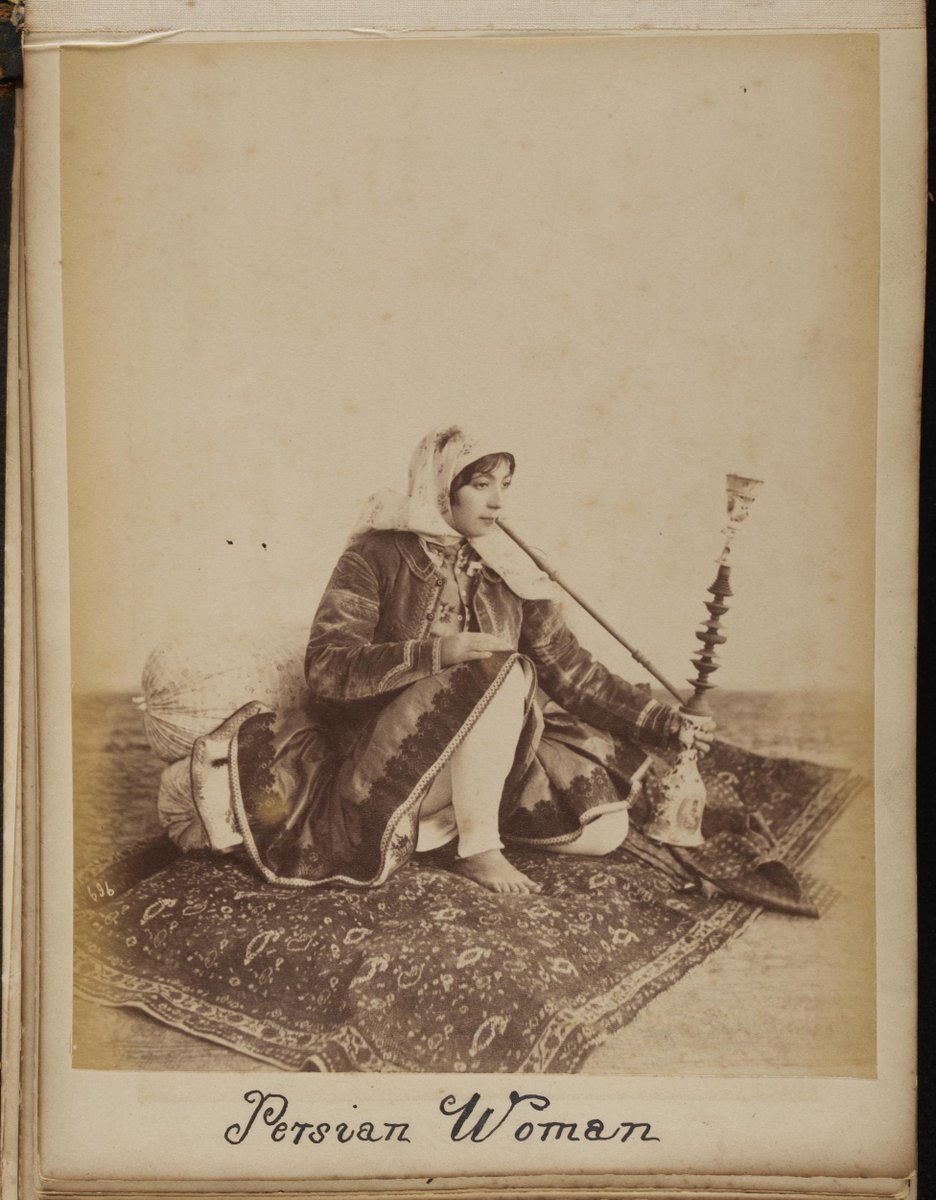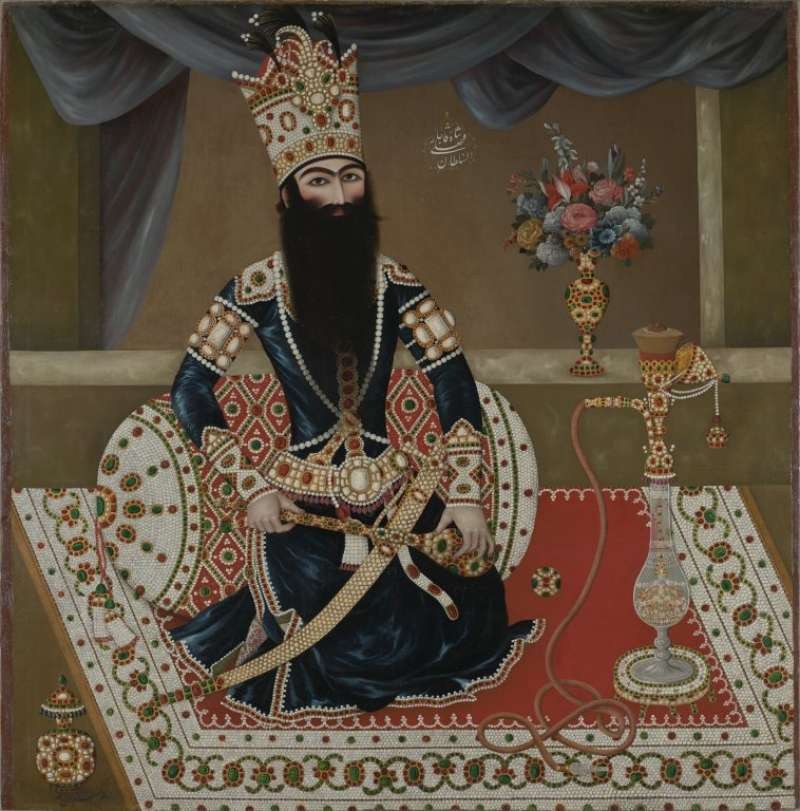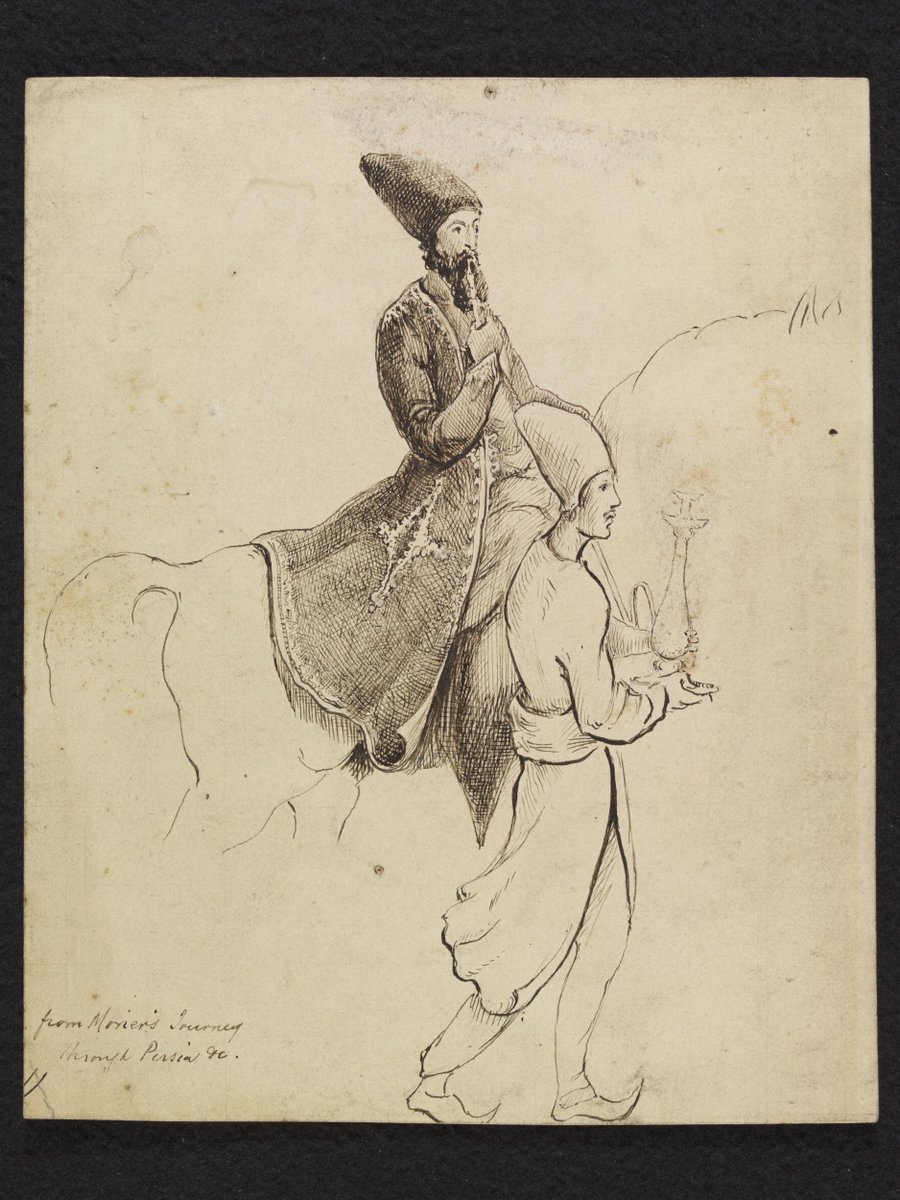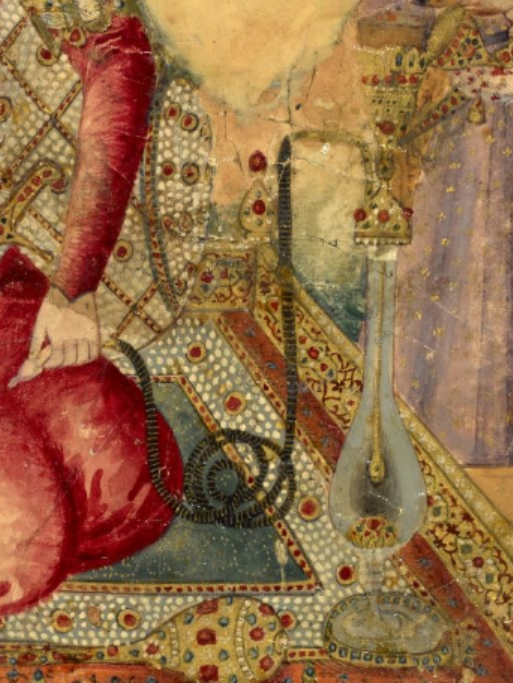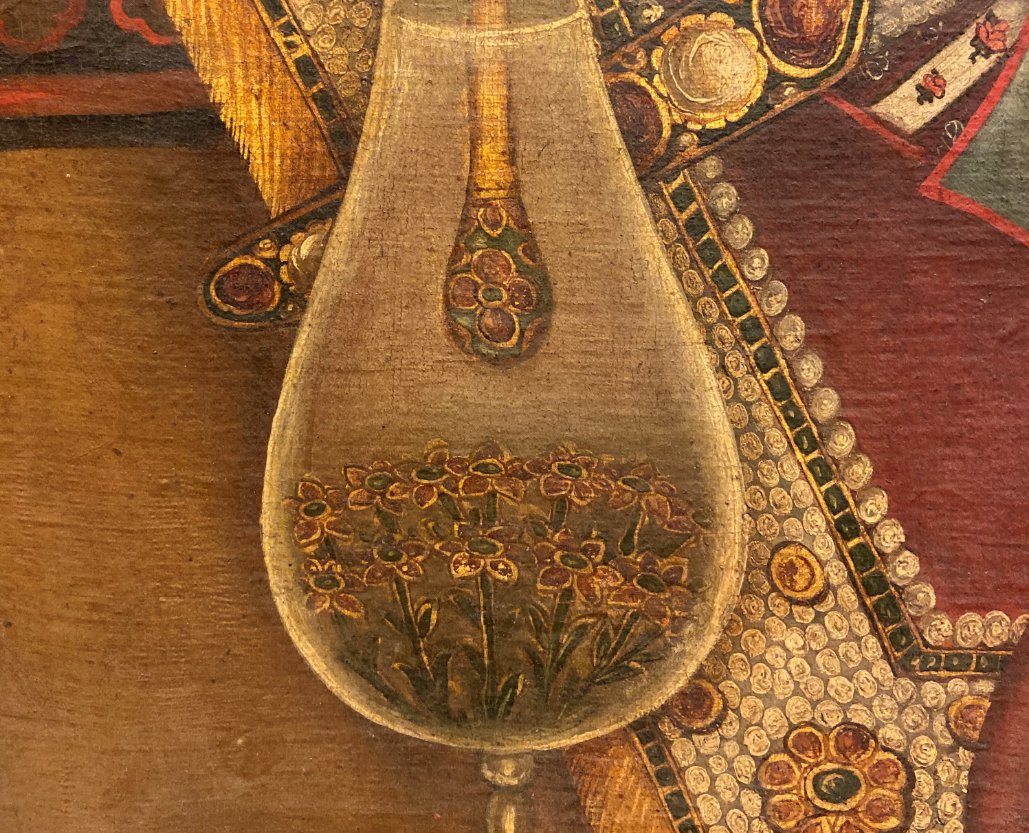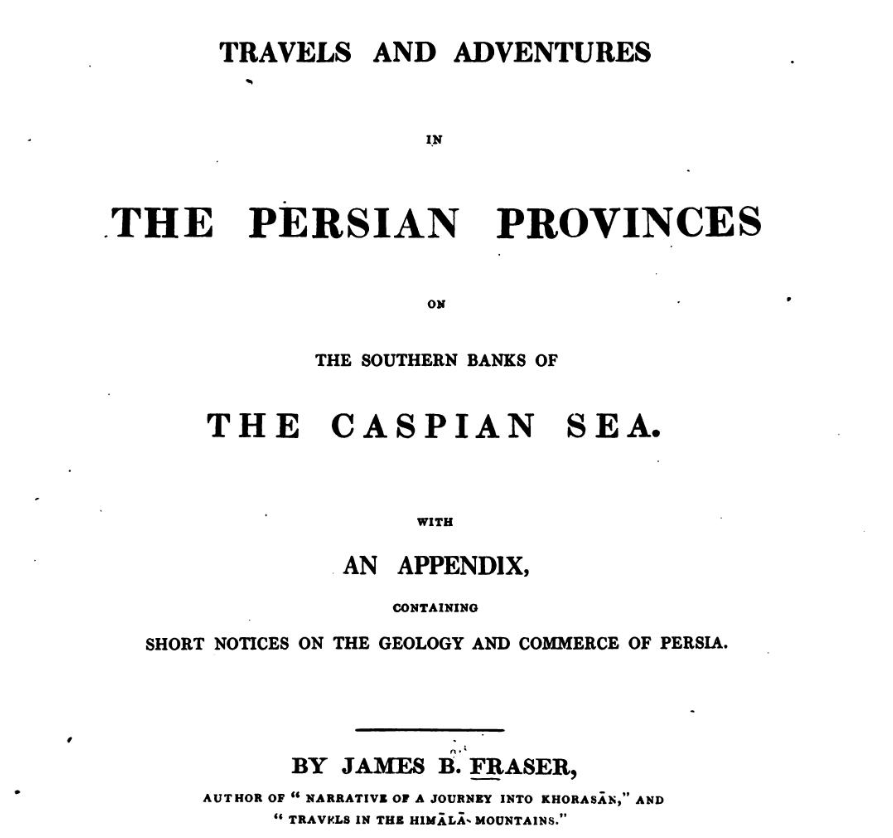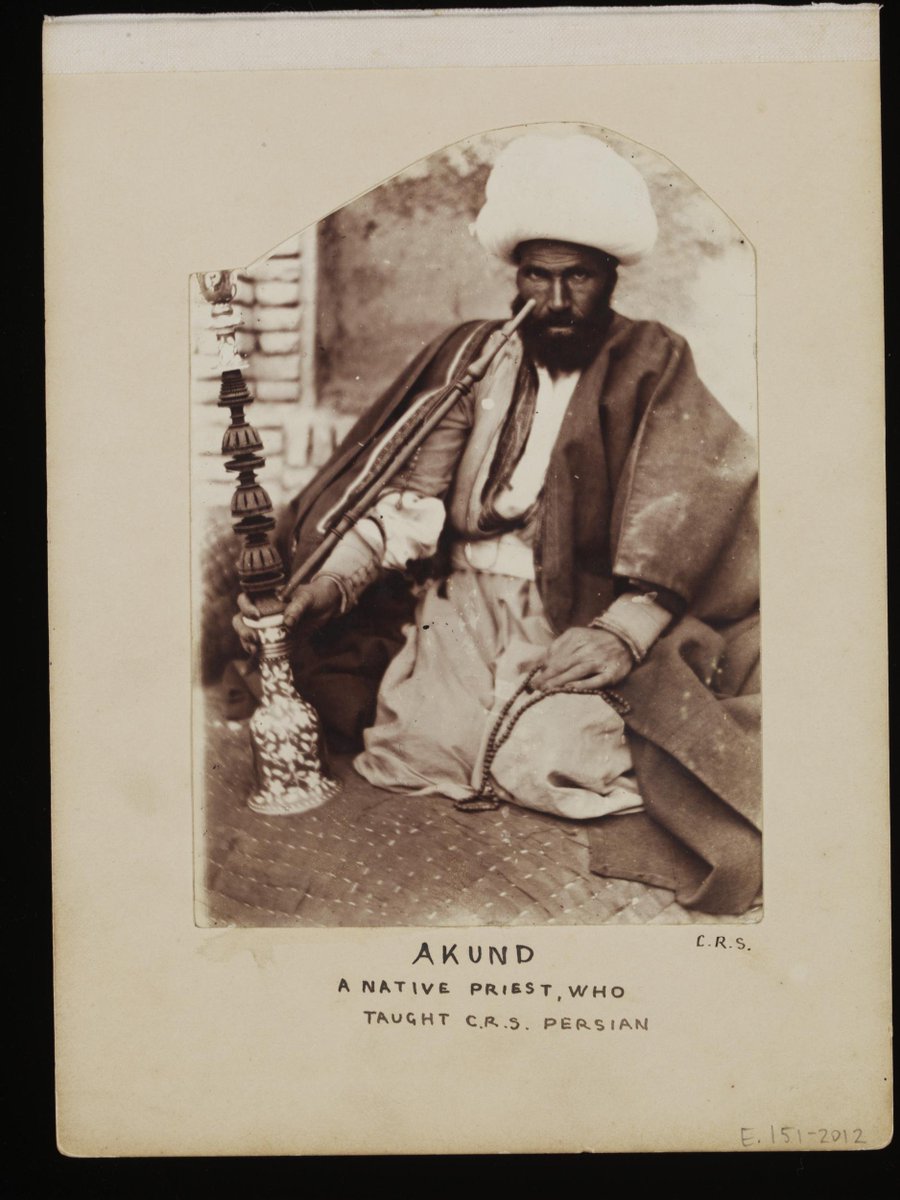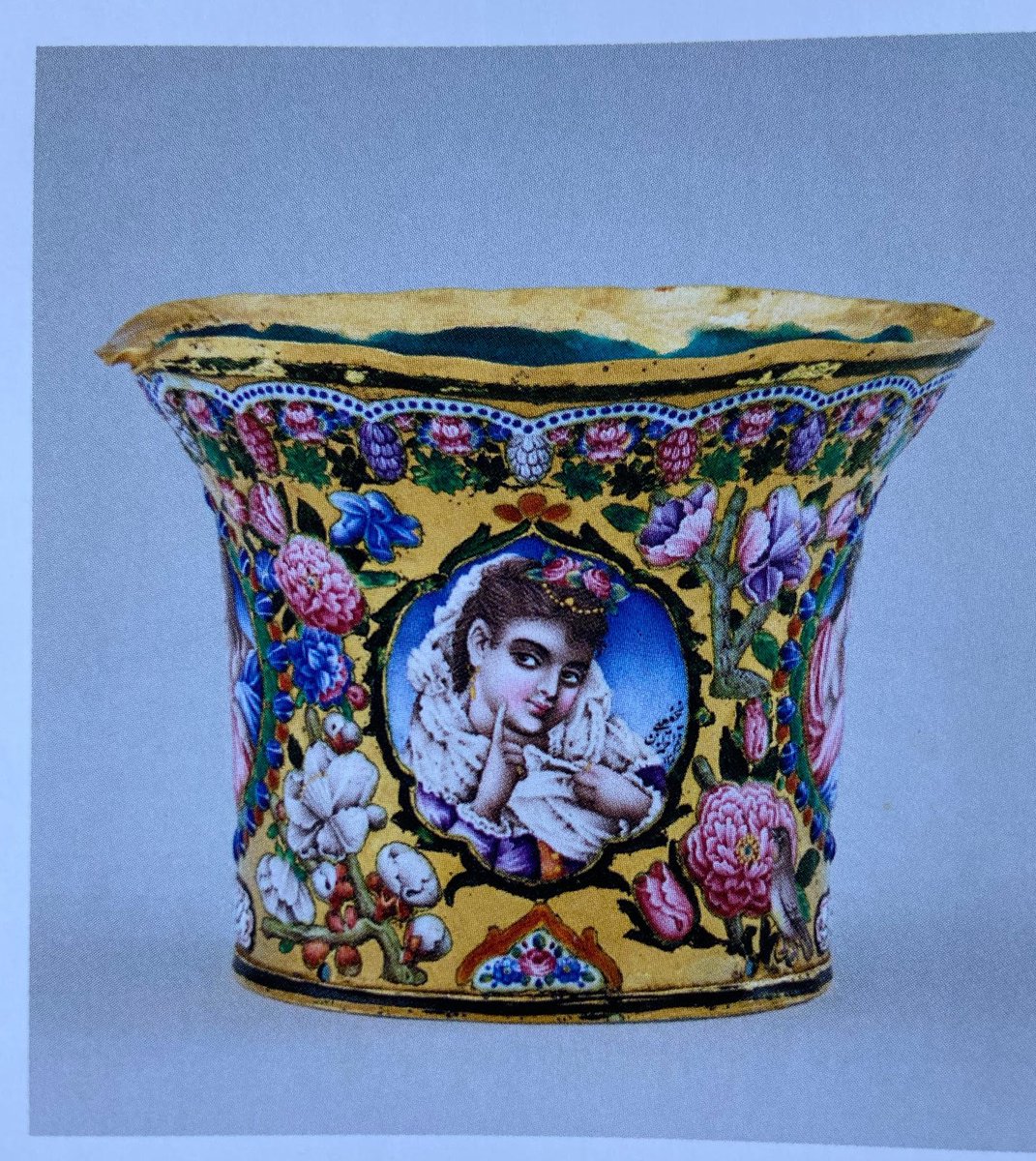#Ramadan2020 is on the way, but I& #39;ve recently been reading a bit about Ramadan in the early-19th century in Iran. I think most non-Muslims probably associate Ramadan with not eating, but what about not smoking your shisha (qaliyan) or opium pipe?
The shisha pipe was pretty much a permanent fixture of life in early Qajar Iran. It was smoked everywhere and at anytime - from when in the mosque, to while on horseback. Fath-ʿAli Shah is often depicted with his pipe at his side.
As a small aside - there was a particularly beautiful type of qaliyan made in Shiraz at the time, which had small metal, enamelled flowers pressed into the inside of the & #39;vase& #39; of the pipe using long pincers when the glass was still soft.
James Baillie Fraser, a Scot who visited Iran a number of times in the early-19th century, seems to suggest that it was common to abstain from smoking the pipe during Ramadan. He writes that the moment it was permitted on breaking the fast...
& #39;Without the loss of a moment, the calleeoon or Persian pipe is in their hands; and then the long indraught of the delicious fumes, with the half-closed eyes, and features relaxing into good humour, show, by the deep delight they express, how painful the privation has been.& #39;
Fraser also mentions opium, explaining that those who can& #39;t go cold turkey during Ramadan & #39;for fear of death, or great derangement of the system& #39; continue to take what they need to sustain them throughout the day, as long as they give alms to the poor or the mosque to compensate.
We also know that clerics enjoyed smoking their shisha pipes in the early 19th century - there is anecdotal evidence of this in the Qisas al-ʿUlama - but the same source also shows us that there was a certain amount of disagreement.
When it came to Ramadan, there were some clerics who argued that smoking the pipe did not break the fast - one cleric even sat atop his minbar smoking. However, there were, of course, others who took the opposite stance.
That& #39;s it for now, but this has actually made me want to do a thread just on the qaliyan, both the different types which we still have examples of in museums today, and references in literature, but in the meantime, feel free to ask any questions!
Images: 1. V&A E.339:17-2010; 2. GAC 5230 & V&A
SD.689; 3. BL IO Islamic 3558 & Bodleian LP 844; 7. V&A E.151-2012; 9. from L& #39;Empire des rose catalogue, Louvre MAO2303.
SD.689; 3. BL IO Islamic 3558 & Bodleian LP 844; 7. V&A E.151-2012; 9. from L& #39;Empire des rose catalogue, Louvre MAO2303.

 Read on Twitter
Read on Twitter